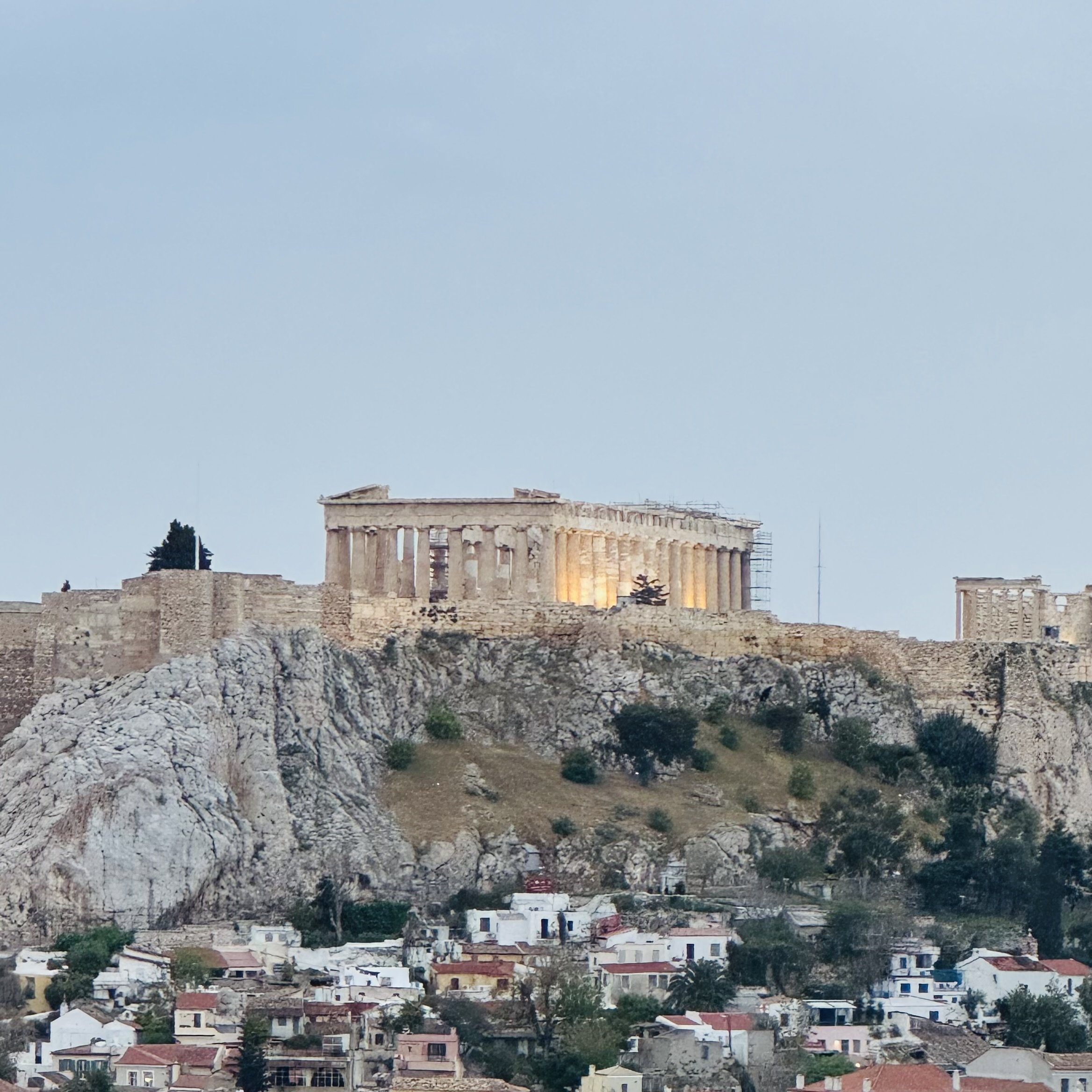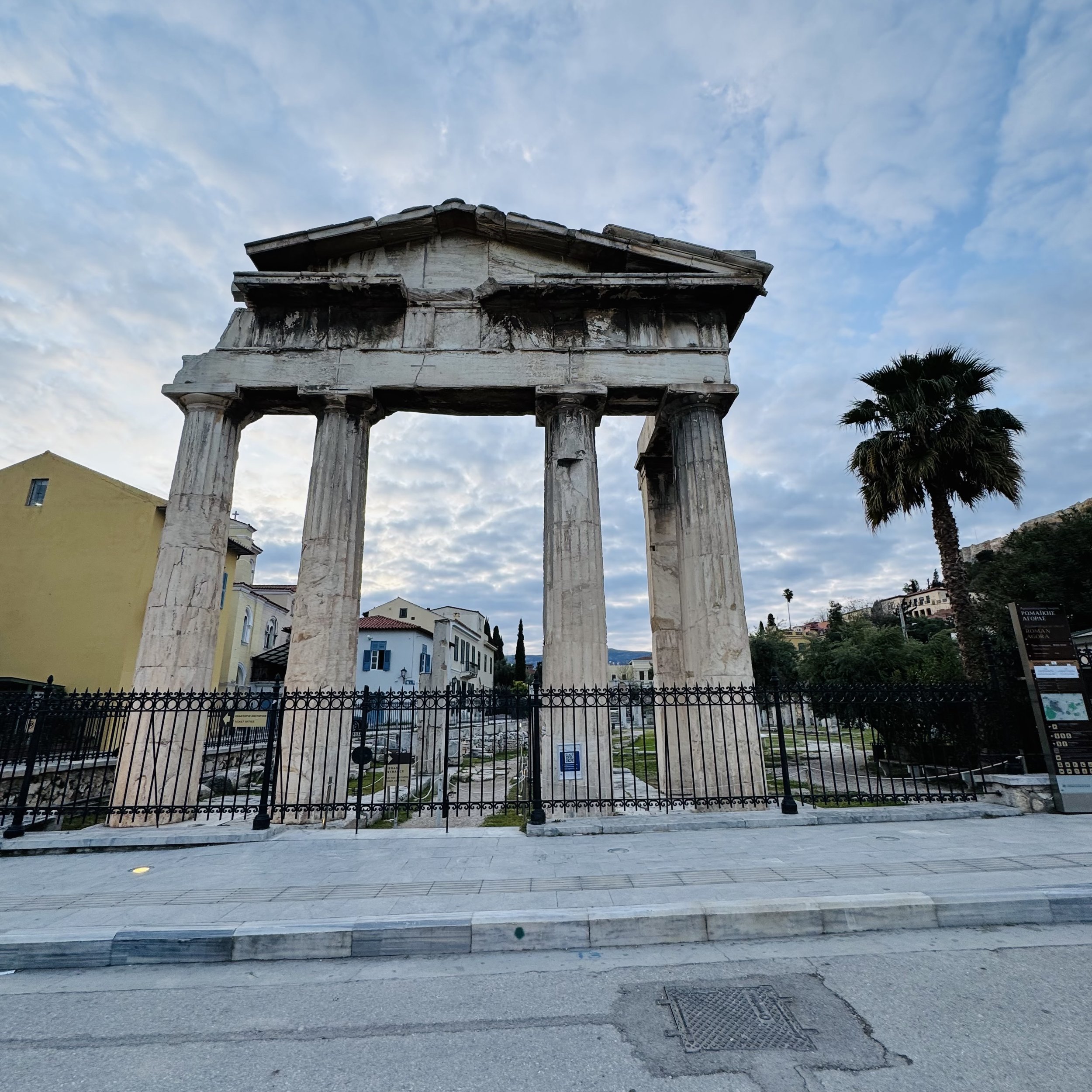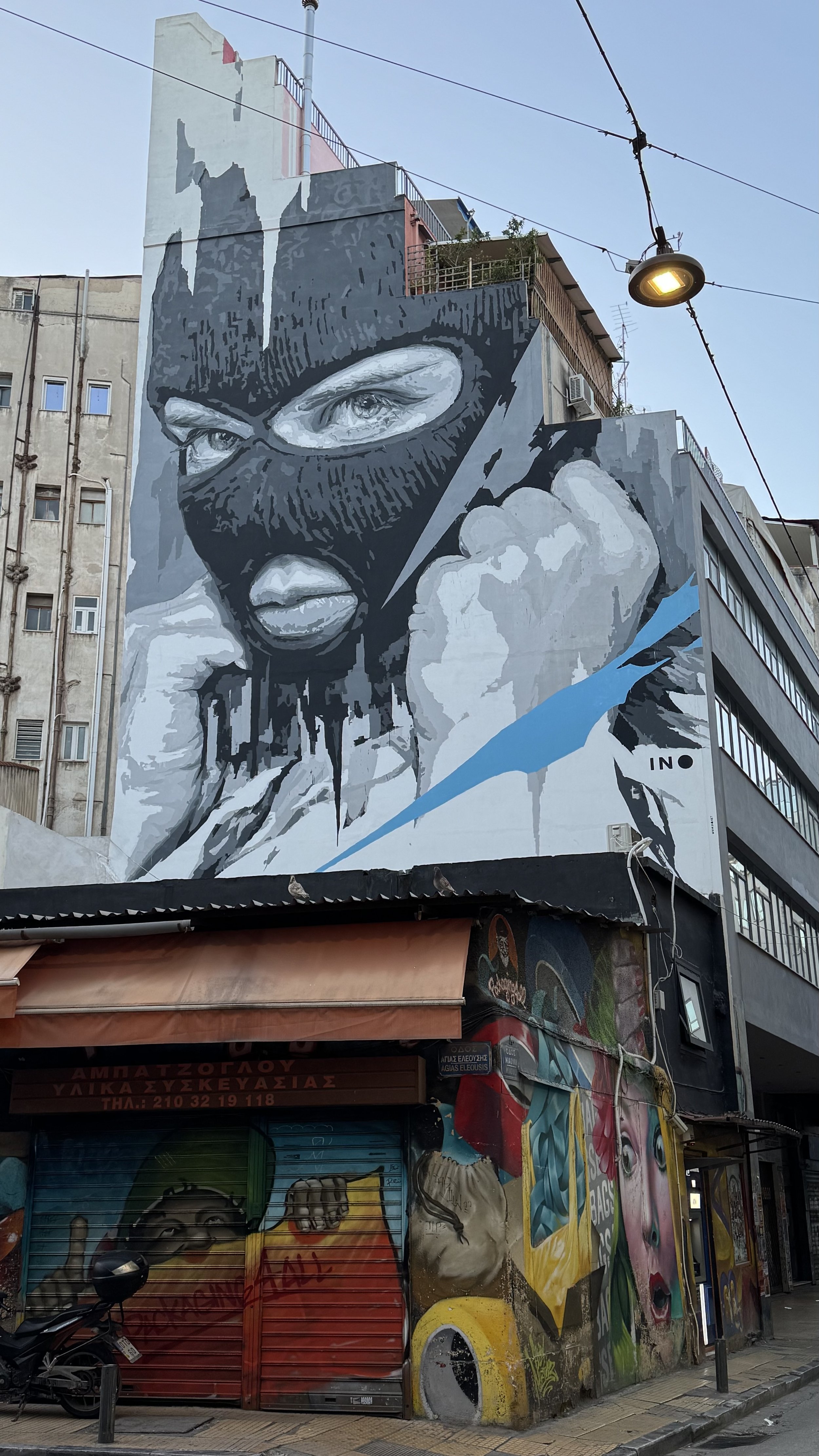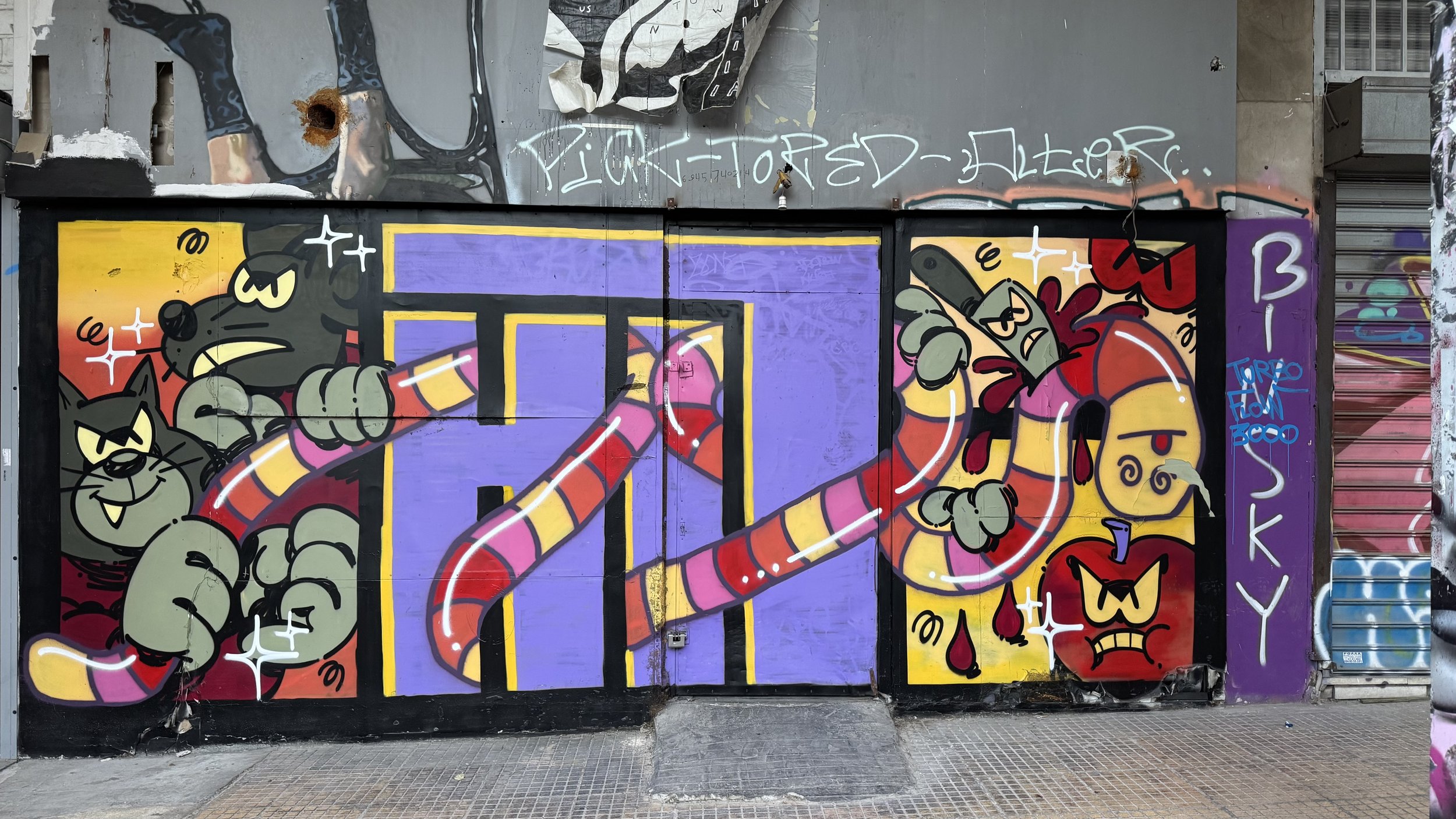Athens and Hydra
Visiting Greece is a chance to dive into a rich mix of ancient history and lively modern culture. Two places that really capture this are Athens, known as the birthplace of Western civilization, and Hydra, a peaceful island with deep maritime roots.
To avoid the high heat, high tourism of the summer season, I went in early April and enjoyed cool temps in the 60s and 70s with very few crowds - so I highly recommend the shoulder seasons as the best time to visit!
Athens - Birthplace of Democracy, Philosophy and Greek Tragedy
The Acropolis
Athens is renowned for its historical landmarks and cultural significance. The Acropolis, a UNESCO World Heritage Site, towers over the city and is home to iconic structures such as the Parthenon - the main temple dedicated to the virgin goddess Athena, the Temple of Athena Nike, and the Erechtheion. The Acropolis served as a citadel, a religious site, and the heart of ancient Athens, representing the birthplace of democracy and the development of Western civilization. Acropolis - meaning ‘edge of the city’ - is geographically and spiritually the highest point according to ancient Greeks. Navigating the hordes of tourists can be a challenge, but my tips are - go early or late to avoid the tour buses, wear comfortable shoes, and go off-peak season if possible. Buy timed tickets in advance - don’t just show up - to ensure access to the site. I went right as the site opened and was the first one to the top. I highly recommend getting this for the city's best views and before the midday heat kicks in!
The Acropolis Museum
A visit to the Acropolis Museum further enriches the experience, showcasing artifacts and exhibits illuminating the city's glorious past. The new Acropolis Museum opened in 2009 to house all of the artifacts from the archaeological site of the Acropolis - it even has glass floors to show the excavation of older sites found during construction. One remarkable aspect of the building is top floor is in the exact orientation and size as the Parthenon - with plaster casts standing in for the sculptures in London alongside the original bas-reliefs, sculptures and the original caryatids (the women supporting the porch of the Erechtheion), allowing incredibly up close and detailed viewing of these world famous statues. The 5th-century sculptures on the pediments—the Elgin Marbles now housed at the British Museum—are some of the finest examples of artistic creation in antiquity, inspiring artists such as Rodin, Henry Moore, and writers like John Keats.
Major Sites around Athens
Athens is an open-air museum of a city with vibrant neighborhoods, such as Monastiraki, Plaka and Kolonaki. You could spend all day wandering around and exploring each area. Here are some of my favorite monuments - the changing of the guards at Syntagma Square is a must do - as well as going to the top of Mount Lycabettus for a birds eye view of Athens stretching out to the sea. The Roman and Athenian agoras are worthwhile - especially the standout Temple of Haepheustus.
Neighborhoods
Athenian neighborhoods each have their own charm—from the supercentral meeting point of Monastraki to the streetside cafes and bars of the Plaka, artsy Psyrri, to the upscale and ritzy Kononaki area at the foot of Mount Lycabetus. Here are some of the great places I found on my adventures to check out…
Psyrri - Street Art
Psyrri is renowned for its dynamic street art scene, featuring works by artists like iNO and WD (Wild Drawing). The neighborhood also hosts several art galleries, such as AD Gallery and a.antonopoulou.art, showcasing contemporary Greek and international artists.
Monastriaki - Athens’ open air living room
This central hub is a melting pot of cultures and eras. Here, you'll find the 10th-century Pantanassa Church, the 18th-century Tsisdarakis Mosque, and panoramic views of the Acropolis. The square is a lively gathering place, often filled with street performers and local vendors.
Plaka - The heart of Athens
Plaka, often referred to as the "Neighborhood of the Gods," is Athens' oldest and most picturesque district, nestled beneath the Acropolis. With its labyrinthine cobblestone streets, neoclassical architecture, and vibrant atmosphere, it’s an excellent spot for a late afternoon walk followed by happy hour and people watching.
Kolonaki - Beverly Hills of Athens
Kolonaki, nestled on the slopes of Mount Lycabettus in central Athens, is a sophisticated neighborhood known for its blend of luxury, culture, and local charm. Excellent restaurants line the sloping streets - had some of the best meals in this part of town. Also, check out the Periscope hotel for swanky digs on a quiet street.
Hotel Grande Bretagne
The Grand Dame Hotel of Athens is the Grande Bretagne. With its pride of place on Syntagma Square and old-world charm, it is the meeting place of royalty and celebrities and the most fashionable address in town. Whether you're staying at the hotel or not, the GB Rooftop bar and restaurant are not to be missed. Top notch service, an inventive menu, classic cocktails - I got the Roger Moore Martini, a riff on the Bond Vesper martini - but most of all is the drop-dead gorgeous view of the Acropolis that changes from day, twilight, and nighttime. I was lucky enough to land in Athens on my birthday, so I went directly to the hotel and got up to catch a drink and enjoy the sunset views from the rooftop. Magic!
Hydra Island
Hydra (Yee-dra) is one of Greece’s Saronic Islands, located only an hour and a half by high-speed ferry from Athens. Long a refuge for wealthy Athenians, artists and poets, the island retains much of its charm since it is totally car-free; the only transportation on the island is donkey, water taxi, or walking. Unlike the party-centric Mykonos or the cruise ship heavy Santorini, Hydra has a laid-back character that feels like going back a hundred years. Life is centered around the harbor - its 18th-century houses lining the water, alongside sprawling cafes and fishing boats. The longtime home of Leonard Cohen - his grey door home is still an attraction - the whole island has a cultured and artistic vibe. Getting there is easy - the Fast Cat from Piraeus port quickly stops in Poros, then onto Hydra in under 90 minutes. Once there, you hear only the sounds of donkeys’ hooves, church bells, and the bustle of the port. My Airbnb on the harbourside had one of the most stunning views!
Hydra Port
Hydra port is the ebb and flow of life on Hydra - with each arriving ferry depositing travelers, to the vibrant cafe life circling the harbor to the departure point for hikes and water taxis to more remote parts of the island. Here are some snaps of life along the water on this unique island….
Hikes on Hydra
Hydra’s hiking network is surprisingly extensive given the island’s size. One of the most popular routes is the coastal trail from Hydra Town to the monastery of Agia Matrona, winding past stone mansions, wild thyme bushes, and postcard-perfect coves. The views along the way are breathtaking: the blue-on-blue expanse of sea and sky, with the Peloponnese mountains in the distance. Another must-do hike is Mount Eros, the island’s highest point at just shy of 2,000 feet. The trail starts gently as it weaves through pine forests and past old chapels, eventually opening to panoramic views that make the steep ascent well worth the effort. From the summit, you can see the entire island, the surrounding sea, and even other Saronic isles on a clear day.
Parting Shot - Leonard Cohen
Hydra’s most famous resident was Leonard Cohen, who bought a house on the island at age 26 and lived full-time from 1960 -1967, continuing to visit until his passing in 2016. There is a small monument - a bench with terrific views over the water - and you can still pass by the grey door of his house on the outskirts of town. While on Hydra, he wrote “Bird on a Wire” and many other songs.
























































































